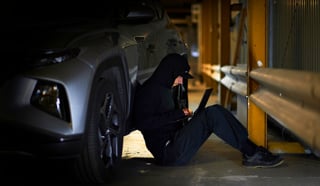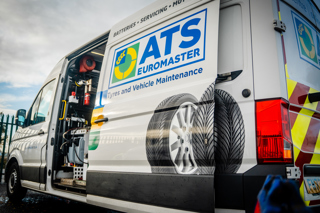The scheme displays the wet grip and economy results through a colour-coded graduation from green to red, as well as a score from A to G, where A is the highest and G the lowest – although not all grades are used for each of the ratings.
The difference between each grade means a reduction or increase in fuel consumption of between 2.5% and 4.5%. According to Continental Tyres, that’s a difference of 0.42-0.56mpg for a 36mpg car per grade.
Consequently, a C-rated tyre will use one litre more fuel than a B-rated tyre over 625 miles – a cost per tyre of around £1.40 at current diesel prices, or £5.60 per vehicle.
Over 15,000 miles a year, that becomes a cost to the business of £134 per vehicle, or £13,440 for a fleet of 100.
The fuel efficiency difference between a set of tyres rated A and one rated G is up to 7.5%.
This difference is estimated to save £110, or 80 litres of fuel, over the life of the tyre – typically 20,000-25,000 miles – which equates to £440 per vehicle.
Meanwhile, a tyre given an A rating for wet braking stops in the shortest distance from 50mph, while tyres from class B take an additional 3-6 metres – an increase or decrease in stopping distance of between one and two car lengths.
That trend continues for the subsequent values and results in an increase in braking distance of more than 18 metres – around three or four car lengths – from a vehicle with an F-rated tyre compared to one with an A-rated tyre.
Noise is likely to be a lower influence on fleets’ purchasing decisions and the labelling scheme only relates to future European regulations.
One black wave on the label means low noise – at 3db or more below future noise limits; two black waves is equal to or below by up to 3db; three black waves is a level greater than future limits, but still complies with today’s regulations.
The useful lives of tyres vary widely, depending on the type and quality.
Some last twice as long as others – typically equivalent to more than one extra year of driving.
Cold weather tyres are a good example of why labelling is only one part of the story, according to Guthrie.
“When it’s 20 degrees below zero, it’s much more important that the tyres are able to cope with ice and snow than it is to cope with a wet road at 20 degrees,” he explains.
- For more on the tyre labelling scheme, go to https://www.fleetnews.co.uk/fleet-management/fleets-in-the-dark-about-new-eu-tyre-scheme/41056/

























Sarah - 28/05/2019 10:49
You get what you pay for and you pay for your style of driving too You can't say get A rated grip tyres and expect A rated fuel economy Grippier tyres are far better for safety obviously and the sportier driver may prefer these for grip. You won't get an A rated fuel tyre if you want grip I am replacing my Bravuris HM (high mileage tyres) ...They came with the car ....Yes they get high mileage but on my x type Jaguar estate they are only ok in the dry but lethal in the rain, even gentle pulling outs from a standing start can induce wheelspin I wont have these again ...If I want better MPG then I'd buy a car with a smaller more efficient engine ... I am about to replace the tyres and opting for Continental 6 or Primacy 4 ...My car and safe driving are worth more than saving a few pennies in fuel ... It is literally only a few pounds you save over the life of better MPG tyres so I'd rather pay for the safety ...Why have a Jag then go for cheapie tyres ..it doesn't make sense I also have a Toyota Aygo as my daily bomb around car ...Even more reason to fit better grip tyres as they last so long and are so cheap for this car It doesn't matter what size of power of car you have ...They will all slide and crash given the chance so I focus on decent grip ... So, some people save a few quid on cheap tyres and save a few quid more on MPG ...How much do they waste on fags, down the pub, mobiles, take aways, holidays and especially Xmas? Put safety first and but decent grip tyres